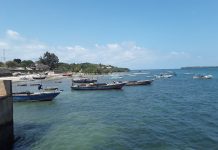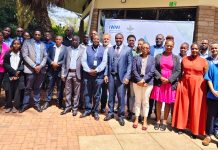By Sharon Atieno
As the World Water Week is commemorated, the world is still not on track to achieve the sixth Sustainable Development Goal (SDG) on drinking water, sanitation and hygiene (WASH).
A report by the World Health Organization and the United Nations Children’s Emergency Fund (UNICEF) shows that billions of people still lack access to safe drinking water, sanitation and hygiene, with vulnerable communities bearing the biggest burden.
The report finds that one in four (nearly 2.1 billion) people still lack access to safe drinking water, while 106 million are forced to rely on untreated surface water.
Some 3.4 billion people lack access to safely managed sanitation services. Of these, 1.9 billion use basic services while 354 million still practice open defecation. Open defecation rates in low-income countries remain four times higher than the global average.
Additionally, some 1.7 billion people still lack basic hygiene services (handwashing facility with water and soap), including 1 billion with limited services (handwashing facility without soap and/or water) and 611 million with no service (no handwashing facility).
The report finds that people in least developed countries are more than twice as likely as people in other countries to lack basic drinking water and sanitation services, and over three times as likely to go without basic hygiene.
“These inequalities are especially stark for girls who often bear the burden of water collection and face additional barriers during menstruation,” said Cecilia Scharp, UNICEF’s head of water, sanitation and hygiene services.
The report also includes estimates for menstrual health indicators for adolescent girls and women aged 15 to 49 in 70 countries. It finds that adolescent girls and women living in low-income countries and in rural areas were more likely to use reusable menstrual materials, and those using reusable materials were less likely to have improved water on premises.
Additionally, while most adolescent girls and women reported using menstrual materials, far fewer had enough materials to change as often as they wanted. Access to a private place to change menstrual materials at home sometimes varied widely between countries.
“At the current pace, the promise of safe water and sanitation for every child is slipping further from reach – reminding us that we must act faster and more boldly to reach those who need it most,” said Scharp.
“Water, sanitation and hygiene are not privileges, they are basic human rights,” said Ruediger Krech, Director of WHO’s Environment, Climate Change and Health Department. “We must accelerate action, especially for the most marginalised communities, if we are to keep our promise to reach the Sustainable Development Goals.”
The 35th World Water Week, is underway in Stockholm, Sweden from 24 to 28 August, under the theme, Water For Climate Action. The meeting highlights the crucial link between water and global warming.
During the week, UN-Water convened two sessions. “Accelerating the achievement of SDG6 in Landlocked Developing Countries (LLDCs)”, bringing together LLDCs who have demonstrated substantial progress toward achieving SDG 6 on water and sanitation. The session provided an opportunity for other LLDCs to draw lessons from the progress made by Bhutan, Rwanda, and Saudi Arabia in ensuring safe drinking water and effective water management.
On 28th August, the International Fund for Agricultural Development (IFAD), Green Climate Fund (GCF), the Swedish International Development Cooperation Agency (Sida), UNICEF, are co-convening a session on “Tap, Invest, Transform: The Future of Water and Sanitation Financing” to gather donors and implementing partners to explore collaborative solutions to water and sanitation financing gaps. Discussions will focus on different models and building alliances to enhance collaboration and sustainability and unlock innovative funding mechanisms for universal access.







